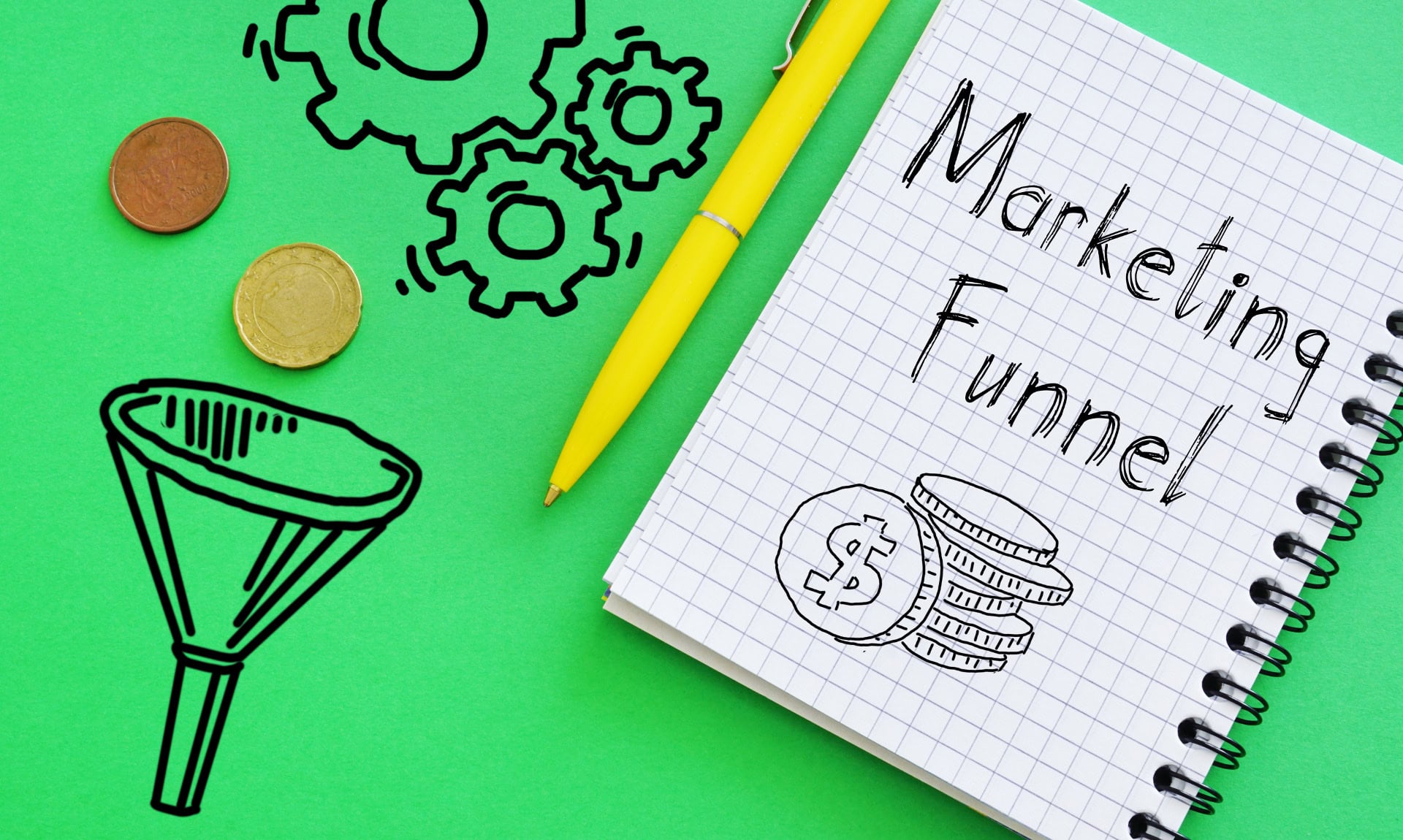
Marketing Funnel vs. Sales Funnel: What’s the Difference?
In the ever-evolving digital marketing landscape, understanding the distinct functions of a marketing funnel vs sales funnel is crucial for optimizing business strategies. These two funnels work together to guide potential customers from initial awareness to final purchase.
This article will dissect the difference between marketing and sales funnels, their metrics, activities, and the importance of a full-funnel approach.
What Is a Marketing Funnel?
A marketing funnel represents the journey a potential customer takes from initial awareness of a brand to the point of making a purchase decision.
It encompasses stages such as awareness, interest, consideration, and intent. Each stage involves different marketing strategies to move prospects closer to conversion.
Importance of Marketing Funnels
Understanding the importance of marketing funnels can significantly enhance a company’s marketing efforts. Here are five primary benefits:
- Targeted Marketing: Enables businesses to create more focused and effective marketing campaigns tailored to each stage of the funnel.
- Resource Optimization: Helps allocate marketing resources more efficiently by identifying the most impactful strategies and channels.
- Customer Insights: Provides valuable data on customer behavior and preferences, informing future marketing efforts and product development.
- Improved Conversion Rates: By nurturing leads through a structured process, businesses can increase the likelihood of turning prospects into customers.
- Brand Recognition: Builds and strengthens brand awareness as potential customers move through the funnel, increasing the chances of customer loyalty and repeat business.
Marketing Funnel Metrics
Effective measurement is crucial for understanding and optimizing a marketing funnel. Here are five of the most important marketing funnel metrics:
- Impressions: The number of times an ad or content is displayed to potential customers, indicating the reach of the marketing efforts.
- Click-Through Rate (CTR): The percentage of people who click on a link or ad after seeing it, showing how compelling the marketing message is.
- Bounce Rate: The percentage of visitors who leave a website after viewing only one page, highlighting issues with engagement or content relevance.
- Lead Generation Rate: The proportion of website visitors who convert into leads by providing contact information, reflecting the effectiveness of lead capture efforts.
- Engagement Rate: Measures interactions (likes, shares, comments) on social media posts or content, indicating how well the audience is engaging with the brand.
Marketing Funnel Activities
Marketing funnel activities also look a little bit different than those witnessed in a sales funnel. Some typical marketing funnel strategies include:
- Content Creation: Developing valuable and relevant content to attract and engage potential customers at different stages of the funnel.
- SEO Optimization: Improving website visibility on search engines to drive organic traffic and increase brand awareness.
- Social Media Marketing: Using social media platforms to promote content, engage with audiences, and build brand presence.
- Email Marketing: Sending targeted email campaigns to nurture leads and keep potential customers informed and interested.
- Webinars and Events: Hosting online or offline events to provide in-depth information, demonstrate expertise, and engage with potential customers directly.
What Is a Sales Funnel?
A sales funnel represents the journey potential customers take from the initial contact with a business to the final purchase decision.
Like a marketing funnel, it involves stages such as awareness, interest, decision, and action, with a focus on converting prospects into paying customers rather than simply generating leads. Each stage requires specific sales strategies to move leads closer to a purchase.
Importance of Sales Funnels
Understanding the importance of sales funnels is vital for enhancing a company’s sales efforts. Here are five primary benefits:
- Lead Qualification: Helps identify and prioritize leads that are more likely to convert, ensuring sales efforts are focused on the most promising prospects.
- Sales Forecasting: Provides insights into future sales by tracking the progression of leads through the funnel, aiding in accurate sales projections.
- Efficiency Improvement: Streamlines the sales process by identifying bottlenecks and optimizing strategies for each stage of the funnel.
- Customer Relationship Management: Enhances the ability to build and maintain strong relationships with potential customers through personalized interactions.
- Sales Cycle Reduction: Shortens the time it takes to convert a lead into a customer by implementing targeted strategies at each of the sales funnel stages.
Sales Funnel Metrics
Measuring the effectiveness of a sales funnel is crucial for optimizing the sales process. Here are five of the most important sales funnel metrics:
- Lead-to-Opportunity Ratio: The percentage of leads that move from the initial contact stage to becoming qualified sales opportunities, indicating the quality of leads.
- Marketing Qualified Leads (MQLs): The number of leads deemed more likely to become customers based on marketing efforts, serving as a key indicator of the marketing-sales handoff.
- Sales Qualified Leads (SQLs): The number of leads that have been vetted and are ready for direct sales engagement, reflecting the alignment between marketing and sales teams.
- Customer Lifetime Value (CLV): The total revenue expected from a customer over the entire business relationship, helping to identify the long-term value of acquired customers.
- Sales Velocity: Measures the speed at which leads move through the sales funnel, helping to identify how quickly revenue is being generated.
Sales Funnel Activities
To effectively convert prospects into customers, businesses engage in various sales funnel activities. Strategies that are often implemented during the funnel building process are:
- Lead Nurturing: Engaging and building relationships with leads through personalized communication to move them through the funnel.
- Sales Calls: Direct phone or video calls to discuss potential deals and address any questions or concerns from prospects.
- Product Demos: Demonstrating the product or service to potential customers to showcase its value and benefits.
- Follow-Up Emails: Sending targeted emails to keep leads engaged and move them closer to making a purchase decision.
- Proposal and Contract Management: Creating and managing sales proposals and contracts to ensure smooth and timely closing of deals.
Summary of Key Differences
That was a lot of information, so let’s summarize it. Understanding the distinct roles of marketing funnels and sales funnels is essential for developing a comprehensive business strategy. Here’s how they differ:
Objectives
- Marketing Funnels: The primary objective is to create awareness and interest in a product or service with the ultimate goal of generating workable leads.
- Sales Funnels: On the flip side, the main objective in a sales funnel is to convert those interested prospects into paying customers.
Activities
- Marketing Funnels: Activities include content creation, SEO optimization, social media marketing, email marketing, and hosting webinars or events.
- Sales Funnels: Activities involve lead nurturing, sales calls, product demos, follow-up emails, and proposal and contract management.
Metrics
- Marketing Funnels: Key metrics include impressions, click-through rate (CTR), bounce rate, lead generation rate, and engagement rate.
- Sales Funnels: Important metrics include lead-to-opportunity ratio, marketing qualified leads (MQLs), sales qualified leads (SQLs), customer lifetime value (CLV), and sales velocity.
Importance of Full-Funnel Marketing
Full-funnel marketing ensures a seamless transition for potential customers from initial awareness to final purchase by integrating both marketing and sales strategies.
This approach enhances customer experience by providing consistent messaging and targeted interactions at each stage of the customer journey. By leveraging full-funnel marketing, businesses can optimize resource allocation, improve conversion rates, and build stronger customer relationships.
Marketing Funnel vs. Sales Funnel: Final Thoughts
Understanding the differences between a marketing funnel and a sales funnel is crucial for developing a robust business strategy. Each funnel plays a unique role in guiding potential customers through their journey. By leveraging the strengths of both funnels through a full-funnel marketing approach, businesses can optimize their efforts, enhance customer experiences, and ultimately drive greater success in their marketing and sales endeavors.
News Via Inbox
Get our monthly report on all the latest and greatest trends in digital marketing.



